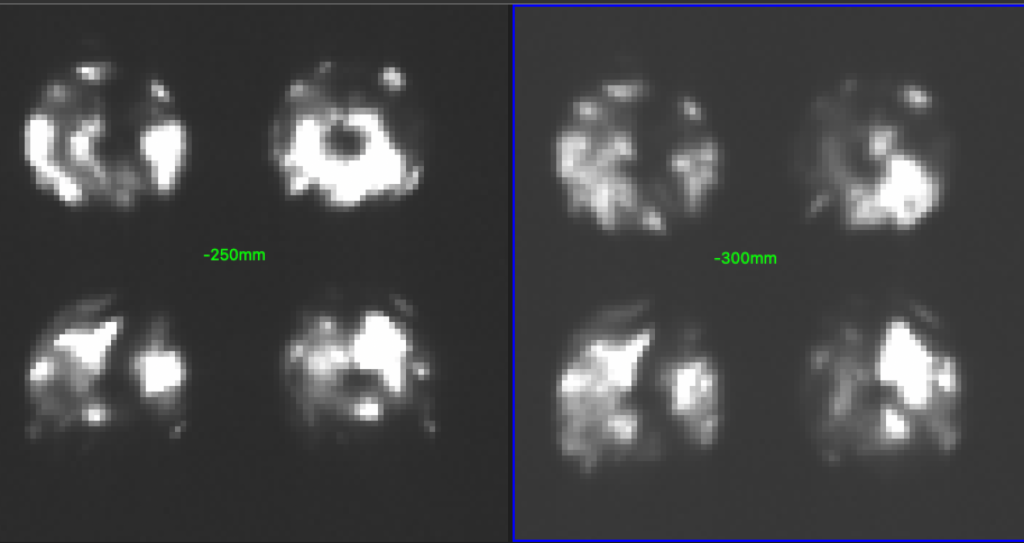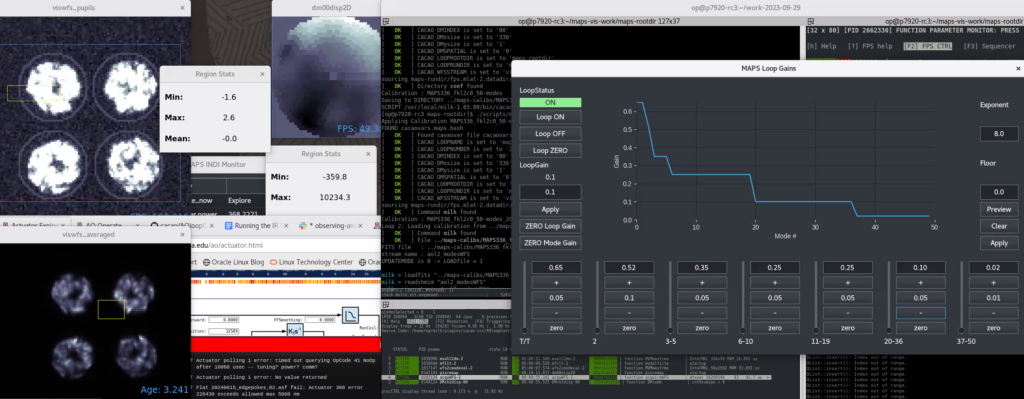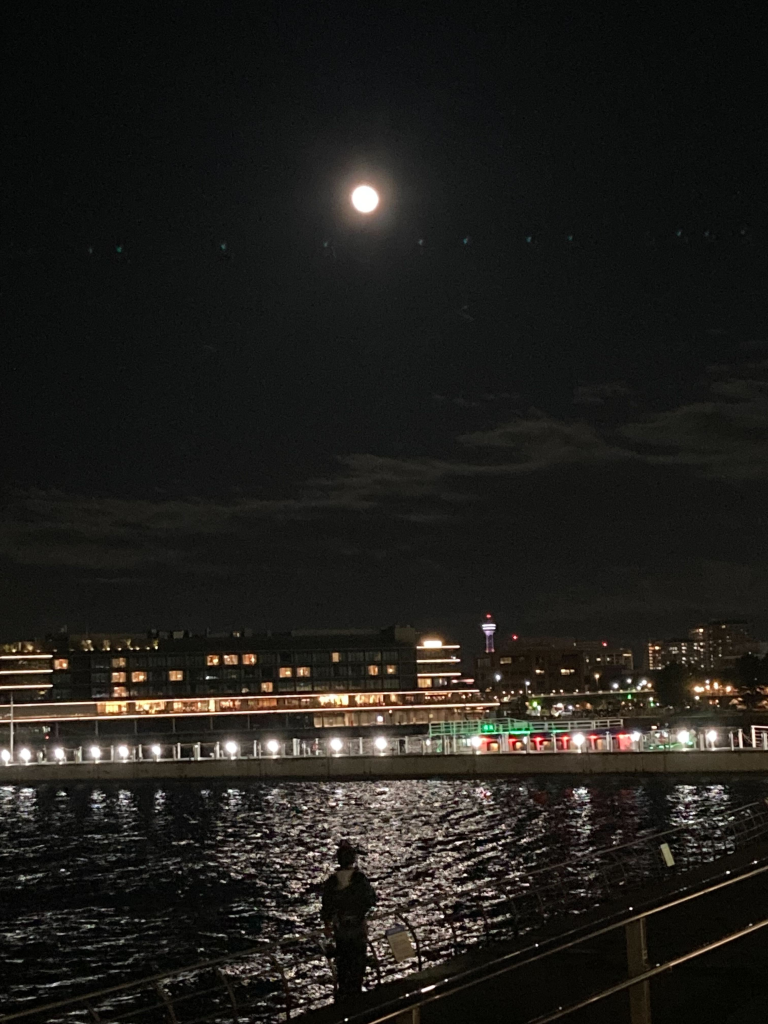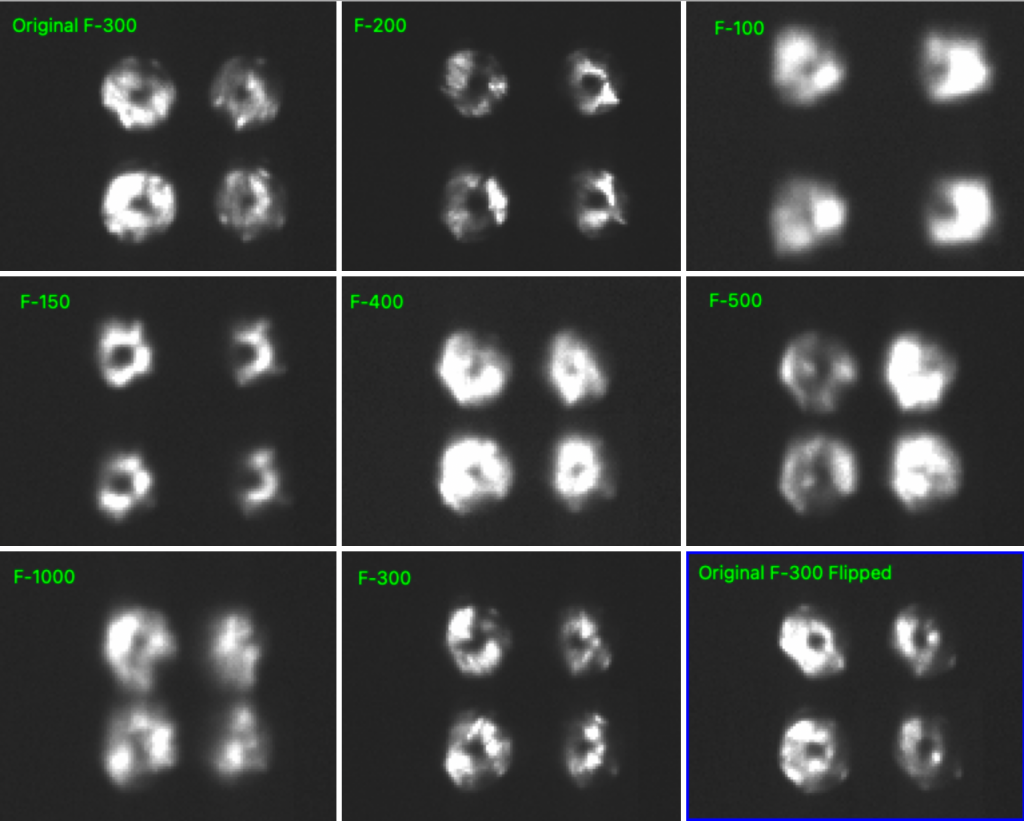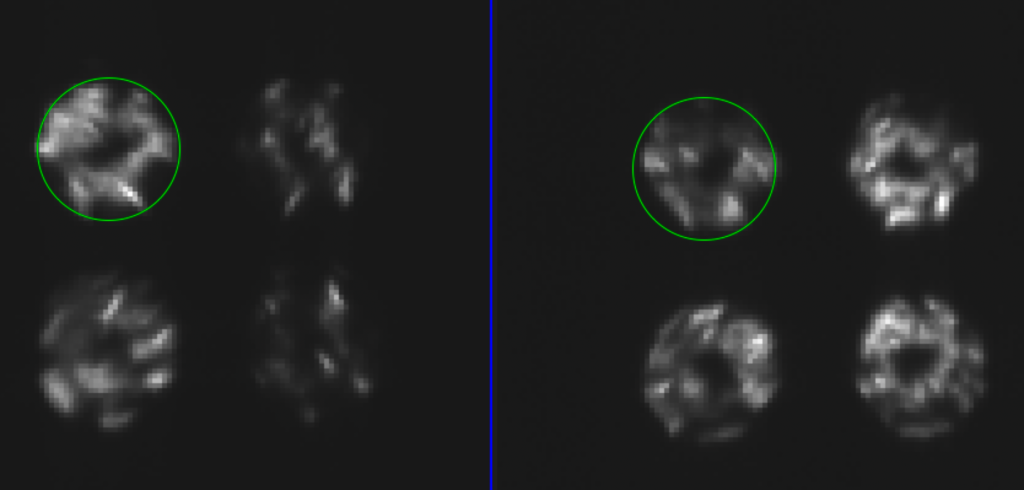Tonight we first took a bunch of ASM latency measurements with different tuning parameters for Jess — took about 3 hours to get 5 iterations, may do more tomorrow night. (Well, this was after being closed for clouds for the first couple hours of the night, same as last night.)
Then we moved on to CACAO calibrating and testing. Amali tried closing the loop using the response matrices from last night. The 20 modes one worked OK, but the 50 modes one was quite unstable even at medium modes (10 and up). So then we tried median combining them and looking at them here. In the following plots we have 5 iterations of the 50-modes response matrix, and the 6th frame is the median. Tip looks OK, tilt looks OK, and focus looks OK. But they also have odd higher-order signals that AREN’T averaging out. Like the bright white or black volcano. However, these 50 modes were taken with the 20 modes loop closed, and what if that was introducing some noise? So now we are trying going back to the 20 modes response matrix and doing more iterations to average those. For the 20 modes response we are closing the loop on tip/tilt at 0.30 gain and on focus at 0.15 gain. We’ll just keep doing these until sunrise, then average them and try them tomorrow night.
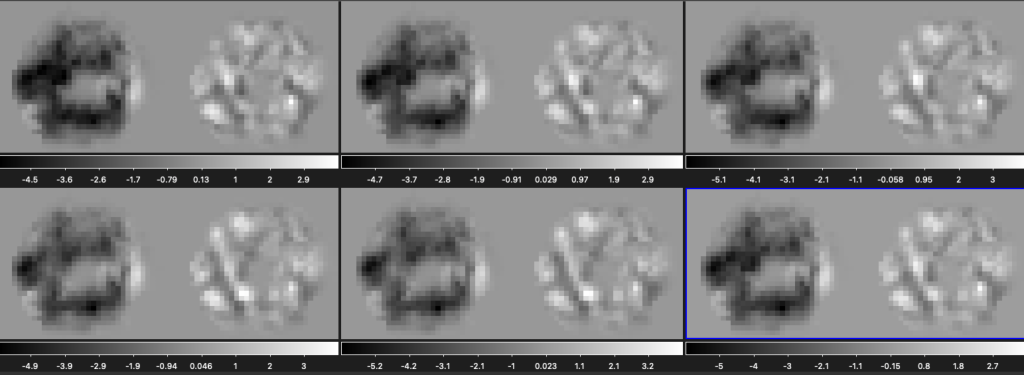
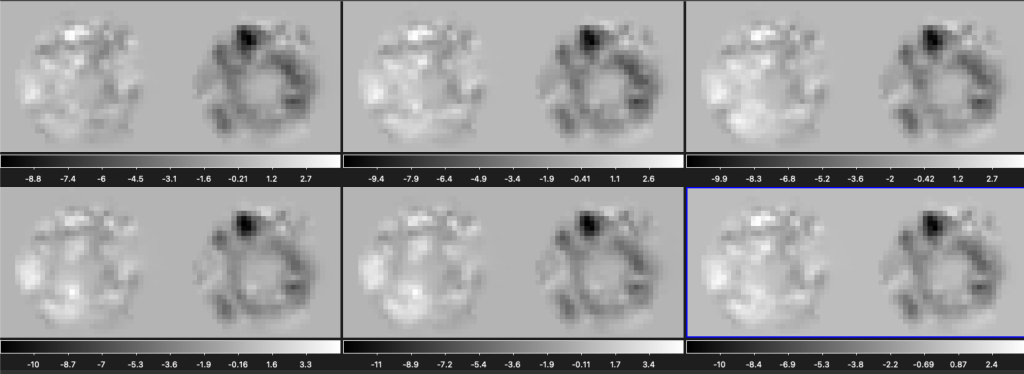
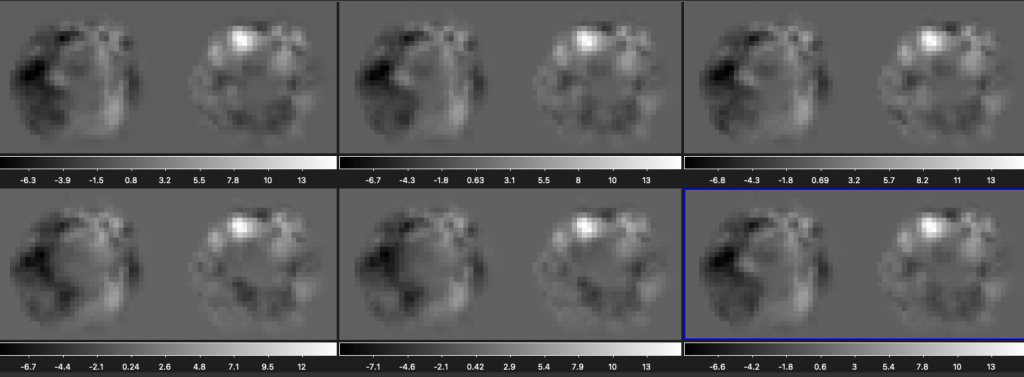
Oh and Yoav had to run up the hill away from a bear as he was coming up to the dome from the Bowl tonight.
The song of the night is “Stressed Out” (Acoustic version) by Twenty One Pilots:
